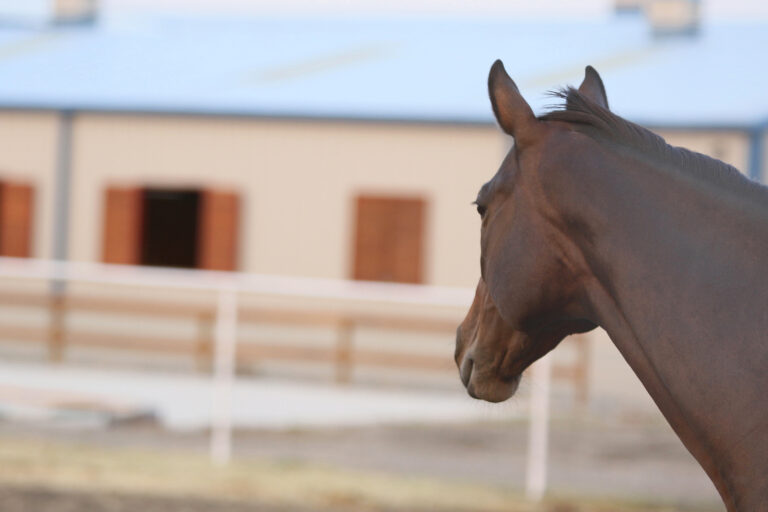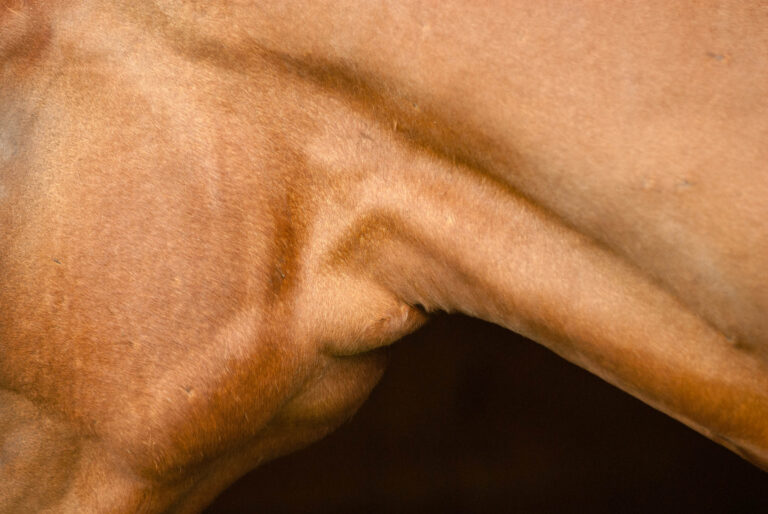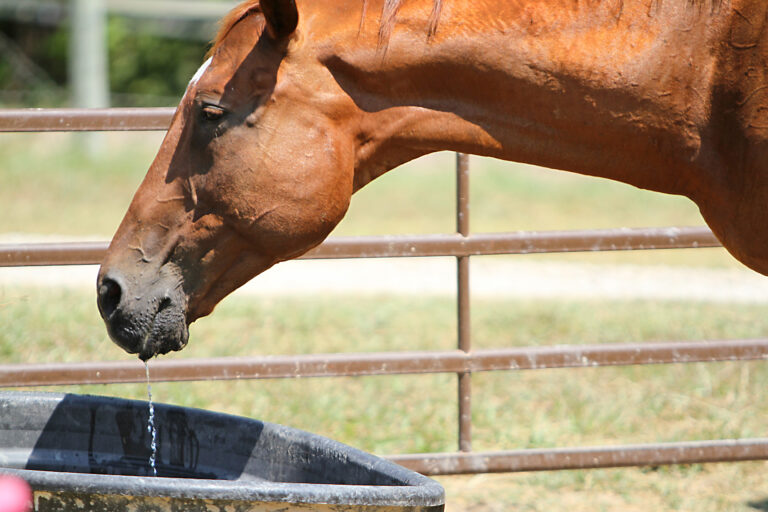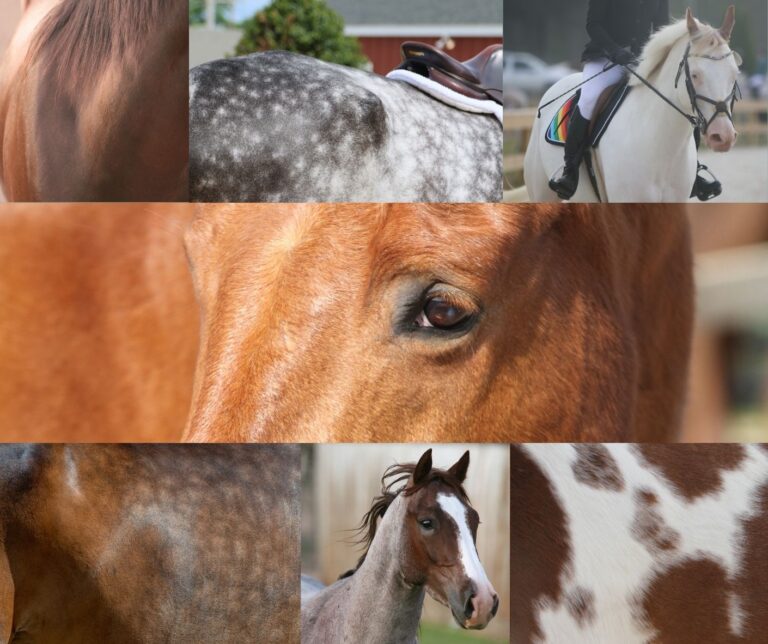- Your horse is a natural show hunter, but you take him to the jumper ring. Why? He’s a “roarer.” Hunter judges won’t pin him ?because his breathing is noisy.
- Your talented young event horse used to drag you around cross country, but now you’re pushing him to finish.
- Your dressage prospect has Grand Prix talent, but he can’t seem to master the degree of collection needed for the higher levels. When you ask for it, he’s willing?but then he makes a weird gurgling noise, tenses up and shuts down.
Different horses, different problems?but all have conditions that affect their breathing and limit their careers. In this article two leading veterinarians explain how some common problems in the upper and lower airways can lead to poor performance and noisy respiration.
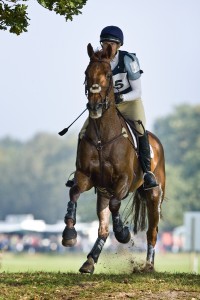
Every cell in your horse’s body (including those of the muscles that power performance) depends on the oxygen he takes in with each breath. So the more you ask of him, the harder his respiratory system works and the more significant these problems ?become.
Restricted Airflow
Abnormalities in the upper airway can restrict the flow of air and sometimes produce odd noises. Roaring is by far the most common of these noises in sporthorses, says Eric Parente, DVM, who specializes in performance evaluations and upper-respiratory surgery at the University of Pennsylvania’s New Bolton Center. Your horse makes a high-pitched, raspy sound when he inhales, especially when he draws deep breaths at the canter or gallop. The noise is typically louder with effort, fatigue or when your horse is flexed at the poll (which restricts his airway like a kink in a hose), and it may worsen over time.
Laryngeal hemiplegia (paralysis on one side of the larynx) causes roaring. During exercise your horse normally expands his airway to draw in more air by pulling back the two arytenoid cartilages at the opening of the larynx. In this condition, one of the two cartilages doesn’t move or may even sag into the airway as he breathes in. The vocal cord just behind it, which would normally be pulled flat, stays in the airway and vibrates. Usually, it’s the left cartilage, and the root cause is nerve damage. As the nerve supplying the muscle that moves the arytenoid degenerates, the muscle weakens and atrophies.
If the narrowed airway restricts airflow enough, your horse tires more quickly and takes longer to recover because he can’t deliver enough oxygen to his muscles in hard work. How big a problem this exercise intolerance is depends on the degree of ?restriction and the work he does.
- In dressage, your horse may tire in collected work, when his airway is more restricted, and this may limit him at the upper levels.
- An event horse may be limited in cross country, which calls for maximum effort over an extended time. Fatigue will set in?and as it does, his airway will become even more restricted. But the same horse may do well in jumper competition, where peak ?efforts come in short bursts.
- Even without exercise intolerance, roaring is a problem in the hunter ring, where the noise is considered an unsoundness and will keep your horse out of the ribbons.
Other sounds?gurgling, fluttering, ?rasping?appear with some less-common problems that may also affect performance. They include
- epiglottic entrapment. Loose folds of mucous membrane surround the opening to the larynx. In this condition the membrane slips over the epiglottis and traps it so it can’t move to cover the opening when your horse swallows. Besides noisy breathing and poor performance, coughing during exercise is a sign, Dr. Parente says. Inflammation, cysts, abscesses and growths that involve the epiglottis can produce similar signs.
- displaced soft palate. Except when your horse swallows, the soft palate should stay flat on the floor of the pharynx, under the epiglottis. Sometimes, though, it flips over the epiglottis and partly blocks the nasal passages as the horse exhales. Often this happens only in intense work or when your horse is tightly flexed at the poll.
Scoping Out the Problem
The sounds your horse makes during breathing may hint at his problem, but he can have an airway abnormality that saps his performance without making any ?unusual noise. To piece the puzzle together, begin by reviewing your horse’s signs. ?Answer these questions and share the information with your veterinarian:
- When does he make the noise? Is fatigue, head position or some other factor involved?
- Does he tire more quickly or take longer to recover than he did previously?
- Have you noticed other respiratory signs, such as nasal discharge or a cough?
A skilled practitioner can detect some abnormalities on a physical exam, but the diagnosis is most often made with a videoendoscope. The veterinarian passes the flexible video?endoscope through your horse’s nose to the throat, and the view is displayed on a video screen.
Resting endoscopy (done with the horse standing) uncovers most cases of hemiplegia. It also can ?reveal cysts and other growths, but it’s not so good at finding abnormalities that appear only when your horse is working. Exercising endoscopy may help then. It can be done with your horse on a treadmill or moving over ground with a rider. (In the over-ground exam a prepositioned scope feeds video to a recorder/transmitter attached to the saddle pad or contained in a backpack worn by the rider.) There’s no difference in terms of safety, Dr. Parente says, but there are advantages and disadvantages to each approach.
On the treadmill, the clinician ?determines the exercise protocol and can get the high level of effort that may be needed to see the abnormality, while a rider might be inclined to go easy on the horse. But a treadmill exam requires a trip to a clinic that has the equipment, and the horse must be acclimated to work on it.
The over-ground exam can reproduce the working conditions that cause the noise, including poll flexion (a key factor in displacement of the soft palate). “The more closely the exam mimics the actual conditions, the better the results, Dr. Parente says. The equipment comes to the horse and the exam is less expensive than the treadmill test, but the images may not be as clear.
Ultrasound scans are also used to help diagnose these conditions. They can reveal swelling or ?enlargement around the cartilages (a condition called chondropathy).
Surgical Options
Surgery can help roarers and many horses with other upper-airway abnormalities. What’s right for your horse depends on his condition and the situation.
Laser vocal cordectomy may be the answer if he has mild hemiplegia that doesn’t affect his performance but you want to show him as a hunter. The surgeon uses a laser (passed through a scope) to remove the vocal cord visible just behind the weak arytenoid, quieting the noise. Your horse should rest for three to four weeks after the surgery. This operation is done with your horse standing, under local anesthesia and sedation, and typically costs under $1,000. The success rate is good, but Dr. Parente says the fix may be temporary because, over time, the hemiplegia will worsen.
Laryngoplasty (tie-back surgery) is the usual choice when hemiplegia is more significant or makes your horse exercise intolerant. The surgeon pulls the arytenoid flap about 80 percent open and fixes it there with a suture. A vocal cordectomy is usually done at the same time or on follow-up, Dr. Parente says. The ?operation is done under general anesthesia, typically costs about $3,000 and your horse should have four weeks off to recover. ?Success rates are good, but there’s a downside: The tied-back flap can’t help close the airway when your horse swallows, so there’s some risk that food and water may be inhaled. Most horses adjust quickly and learn to swallow safely.
Tie-back surgery is technically difficult, so it’s important to choose a surgeon who has a good track record with this operation. Even then, the fix may not be permanent. Over time, the flap may sag back into the airway. Dr. Parente and his colleagues modified the technique several years ago by taking a slightly different ?approach and debriding (paring away) some tissue in the joint between the arytenoid and the cricoid cartilage behind it. “This leads to an eventual fusion of the joint and a more stable opening in the long run, and it has improved our results,” he says.
Since surgery isn’t foolproof, weigh the risks and benefits before deciding to go ahead. If your horse’s work doesn’t require intense effort, he may be able to live with his condition. Keeping him fit may help by delaying the onset of fatigue, which makes the problem worse.
Surgical treatment can also aid horses with epiglottic abnormalities. For epiglottic entrapment, the surgeon can usually just split the membrane that traps the flap. Like vocal cordectomy, this can be done using a laser with the horse standing and sedated. For soft-palate problems, the ?options depend on the factors that are causing the displacement, which may include muscle weakness, nerve damage, inflammation or other abnormalities. Sometimes these problems can be managed conservatively?for example, by letting the horse travel with less poll flexion.
Deep Trouble
Chronic inflammation in the lower airway (the bronchial tubes and lungs) doesn’t produce a distinctive sound like roaring, but it does limit a horse’s athletic ability. It’s characteristic of two common conditions, both diseases of management, says Harold McKenzie, DVM, an associate professor at the Marion DuPont Scott Equine Medical Center in Leesburg, Virginia.
- Inflammatory airway disease, or IAD, is usually seen in young, athletic horses in training. Horses may show few signs, Dr. McKenzie says, but a cough (especially early in work) and poor performance are characteristic.
- Recurrent airway obstruction, or RAO, commonly called “heaves,” usually ?appears in horses in their teens. Horses with mild cases may cough and show exercise ?intolerance. Severely affected horses may find it hard to breathe even at rest, flaring their nostrils to inhale and giving a marked ?abdominal push (a heave) to exhale.
In both conditions horses are reacting to irritants?dust and minute particles of bedding or hay or bacterial endotoxins carried in dust, mold spores or gases (chiefly ammonia, produced when urine breaks down).
In IAD the irritants produce inflammation, and high-performance activity feeds it. “Peak work overwhelms the ability of the upper respiratory tract to warm and humidify air,” Dr. McKenzie says, as the horse draws in greater volumes. “The cool, dry air that hits the lower airway ramps up inflammation.” Some clinicians think IAD may start with a viral respiratory infection. The horse doesn’t get adequate rest to overcome the infection, so he’s left with lingering inflammation. But it’s not clear that’s always the case. Shipping is another aggravating factor. It’s stressful, and the horse may travel for long periods with his head elevated, a position that makes it harder for him to clear his airway.
RAO shares some characteristics with human asthma. It’s an allergic condition, and its relationship to IAD is debated. “Some believe IAD may be a precursor to RAO,” Dr. McKenzie says. “That’s not certain, but at the least, IAD may contribute to allergy development.” RAO is complex, and research suggests there may be ?genetic factors. “Still, we warn owners that if they don’t fix the risk factors for ?inflammation, they can expect more trouble down the road.”
Diagnosis
Your veterinarian will use a stethoscope to listen for abnormal sounds in your horse’s lungs. An endoscope exam may turn up signs of mucus or pus from the lower airway, but the most useful test is bronchoalveolar lavage, or BAL, Dr. McKenzie says. The veterinarian uses a catheter to squirt a small amount of sterile fluid into the lung and then draw it out for analysis. The levels of different cells in the sample provide information about the degree and type of inflammation that’s present. Although horses typically cough when the catheter goes in, the procedure is safe.
Pulmonary-function tests can be done to assess how well the lungs are doing their job. There are several methods. Most of these tests require a trip to a clinic, and relatively few clinics offer them. “Lung-function testing isn’t widely done because it’s not needed for most horses,” Dr. ?McKenzie says. “The advantage is that it gives you hard numbers that you can use to track a horse’s response to treatment.”
Clear the Air
To get rid of lower-airway inflammation, first remove the irritants that cause it. That may be easier said than done because most horses live surrounded by dust, hay and other triggers, but good management can lower the levels, Dr. McKenzie says.
- Put your horse on a hay-free diet or feed bagged, chopped hay or steamed hay. “Hay is 90 percent of the problem,” says Dr. McKenzie. “Steamed hay has become routine for many horses in my practice.” Steaming is superior to soaking, he says, because it penetrates the bale, kills mold spores and leaves the hay more palatable.
- Don’t let horses with airway inflammation feast on round bales in the pasture. They tend to bury their noses in the bale, inhaling irritants.
- Store hay in a separate building ?(definitely not in a loft above stalls).
- Don’t use straw for bedding.
- Don’t blow the aisles?or if you must, then do it when horses are outside.
- Open barn windows for ventilation and use fans to move clean air through.
- Consider what other irritants your horse may be exposed to. For example, some research has found a higher incidence of IAD in horses stabled close to roads, ?suggesting that vehicle exhaust and dust are factors.
These steps will help most horses, but they may not be enough for horses with severe RAO. “A horse with RAO can seem fine in the field but go into respiratory crisis in a short time when he’s brought into the barn. He needs a run-in shed in the pasture,” Dr. McKenzie says.
Besides management changes, rest (several weeks if possible) and medication can help a horse recover from a bout of airway inflammation. Your veterinarian may prescribe a steroid (inhaled or oral) to lower the level of inflammation. The bronchodilators albuterol (inhaled) and clenbuterol (oral) are widely used; they both antagonize (fight) constriction in the bronchial tubes.
Dr. McKenzie says his thinking on bronchodilators has evolved. “I used to use them routinely, but I’ve come to believe that if a horse needs routine bronchodilator medication, I’m doing something wrong in management or other treatment,” he says. Routine use leads to problems ?because over time bronchial tissue stops reacting to the drugs. They’re no longer so effective, and they won’t help so much in a crisis. Dr. McKenzie now uses bronchodilators only as needed. In some cases he uses Atrovent (ipratropium), which acts in a different manner to help prevent bronchial spasms.
You’ll know your horse is recovering when he coughs less, performs better and has clearer-sounding lungs and other good signs on his physical exam. Your veterinarian can also monitor recovery by repeating the BAL to see if cell levels are getting back to normal. But relapse is likely if his environment isn’t improved.
“It’s important to remember that these are diseases of management, of domestication. Those out on the steppes, where horses evolved, wouldn’t develop them because they wouldn’t be exposed to the same levels of irritants,” Dr. McKenzie says. “So think management first. If the horse needs drugs, you haven’t fixed it.”
This article originally appeared in the August 2012 issue of Practical Horseman magazine.





